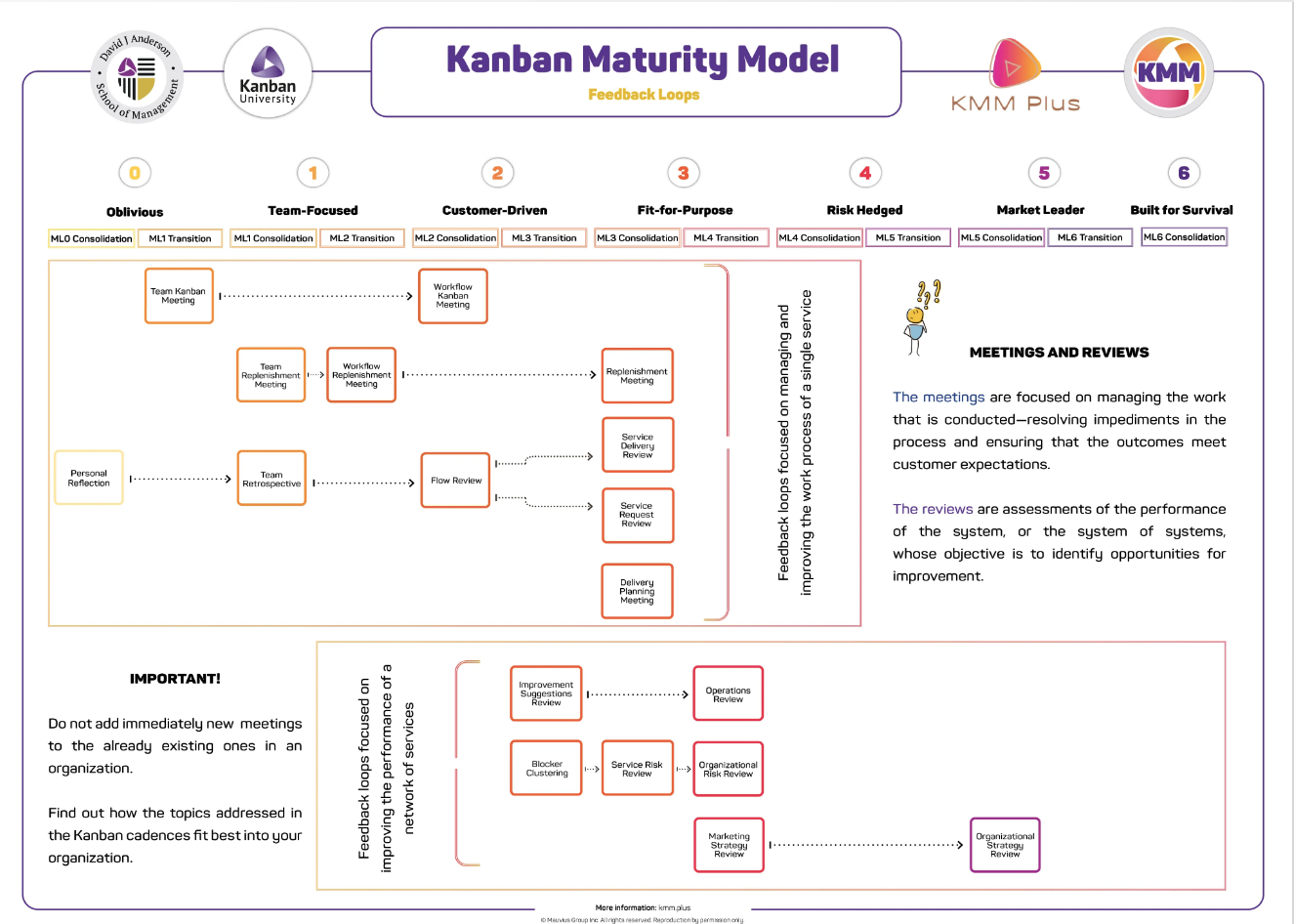Accountability – The Magic Ingredient for Business Agility & Resilience
In a low-maturity market, a lack of leadership is often cited as the reason behind poor customer service, unpredictable, untrustworthy service delivery, and a lack of speed, agility, and effectiveness. However, what we see is a lack of accountability. Accountability catalyzes the required and latent leadership to enable high maturity performance and a platform where Kanban can deliver 8x improvements in productivity and more than a 90% reduction in lead times.
Organizational Maturity
What we learned from four years of the Kanban Maturity Model is that the majority of the market, in professional services and intangible goods industries, is incredibly low in maturity in comparison to their cousins and siblings in tangible goods, physical goods, and services industries. Most of the market matches our definitions of Maturity Level 0 or 1. However, flow is achieved at maturity level 2. The Kanban Method becomes useful at that point and most valuable taking organizations to maturity levels 3 and 4.
We characterize maturity levels as follows
0. Every customer has the pet
1. Never the same way twice
2. Never the same result twice
3. Consistent, trusted delivery
4. Balanced risk, every stakeholder’s needs & expectations met
5. Simply the best
6. A remarkable history of surprising reinvention
What customers want is a supplier that is at least at maturity level 3. However, the market is mostly stuck at levels 0 and 1. The reason often cited for this inertia is a lack of leadership.
Evolutionary Change
To start with what you do now and drive change in an evolutionary fashion, you need stress, reflection, and acts of leadership at all levels in your organization. Low-maturity Kanban implementations typically feature some form of visualization and a rudimentary reflection mechanism; if only at a personal or small team level. So there is an ability to understand that things aren´t working, but any focus on improvement tends to be self-serving; seeking to relieve the workers of overburdening and remove the stress from the environment. What is needed to take the organization’s future is the need to value customer service; to recognize that there is a customer and to work with a sense of purpose that is altruistic and service-oriented. If these things are not present, it is attributed to a lack of leadership.
The inevitability of a lack of leadership
The lack of leadership is explained away with thoughts like ¨leadership is rare¨, ¨leadership requires courage, personal risk, and therefore, a culture of safety. As we don´t have safety in our culture…¨, ¨leadership doesn´t grow on trees¨, or ¨you can´t just snap your fingers and invent leadership¨. There is a resigned, complacency to the effect that ¨things can never get better – we don´t have the leadership¨. And consequently, classes and certifications in leadership have become de rigueur.
Accountability
My Spanish colleagues tell me that there is no word for ¨accountability¨ in Spanish, that it would be translated as ¨the person responsible for …¨ and they know that this isn´t what is meant or intended in English – being responsible for, the person who performs the job, simply isn´t the same as being held accountable. Responsibility is for an activity, while accountability is for an outcome. The responsible person accepted the customer´s order and started the work, while the accountable person ensured it was delivered within the customer´s expectations and that the customer is happy with the outcome.
Accountability catalyzes latent leadership
When you insert accountability together with the appropriate reflection mechanism, in Kanban we call those the Kanban Cadences such as the Service Delivery Review every couple of weeks, then you find that together they spark magic. Accountability with a reflection on how well someone is performing against those expected outcomes creates the necessary stress on the individual to step and show leadership. The necessary acts of leadership emerge when accountability is present. Things start to change, to evolve. Using the Kanban Maturity Model as a roadmap they will evolve to maturity levels 3 and 4 – customers and other stakeholders will be adequately served, and the business will move from an inherently fragile condition to a much more robust, trusted, position with loyal customers, repeat business, and recommendations.
Delivering Organizational Agility & Resilience
So, those senior leaders reading this, looking for the secret sauce and the magic carpet to transport your organization to a glorious land of agility and resilience, it is up to you. You must lead by holding people accountable! Accountability in your junior and mid-level positions, coupled with transparency and regular reflection is how you bring out the best in your people, and how you switch on the latent leadership within them. Taking responsibility is not enough, make people accountable for outcomes.
What next?…
At the David J Anderson School of Management, we teach classes in organizational agility, maturity, and resilience, together with classes in leadership and organizational culture. If you would like to learn more please contact our customer service team.





